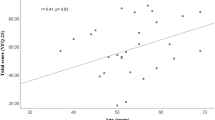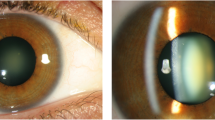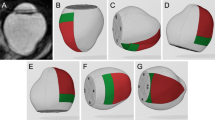Abstract
Simultaneous ‘real-time’ B-mode and doppler ultrasound techniques were used to study movements of the detached vitreous gel which occurred during duction movements of the eye. The velocity of sound scatterers within the vitreous gel were measured and it was possible to differentiate quantitatively gels which were ‘stiff’ from those which were ‘sloppy’. Information obtained using this technique may throw light on the pathogenesis of rhegmatogenous retinal detachment and assist in the quantitative assessment of retinal mobility in eyes with vitreoretinopathies.
Similar content being viewed by others
Log in or create a free account to read this content
Gain free access to this article, as well as selected content from this journal and more on nature.com
or
References
McLeod, D and Restori, M . Rapid B-scanning in ophthalmology. Clinical Diagnostic Ultrasound. Eds E. Barnett and P. Morley. Chapter 6. Black-well series, Edinburgh (1985). plll–120.
Till, P and Lessel, MR . Doppler techniques. Hand book of Clinical Ultrasound. Eds. de Vlieger, M, Holmes, JH, Kazner, E, et al John Wiley & Sons, New York, 1978: 905–17.
Machemer, R. The importance of fluid absorption, traction, intraocular currents, and chorioretinal scars in the therapy of rhegmatogenous retinal detachment. XLI Edward Jackson Memorial Lecture. Am J Ophthalmol, 1984, 98: 681–93.
Jaffe, NS The vitreous in clinical ophthalmology. C. V. Mosby Co, St Louis. 1969: 189–90.
Author information
Authors and Affiliations
Rights and permissions
About this article
Cite this article
Wong, D., Restori, M. Ultrasonic doppler studies of the vitreous. Eye 2, 87–91 (1988). https://doi.org/10.1038/eye.1988.18
Issue date:
DOI: https://doi.org/10.1038/eye.1988.18



